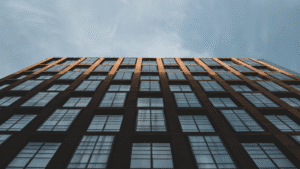Seven years on from Grenfell, the UK’s property landscape has changed forever.
What began as a devastating tragedy exposed not just a failure in fire safety — but a systemic breakdown in how buildings were constructed, managed, and regulated. The name Grenfell is now synonymous with loss, but it has also become a driving force for reform, accountability, and change in the way we think about building safety.
At Levels Property Management, we believe in learning from the past and leading with responsibility. So let’s talk about what “life after Grenfell” really means — and why cladding remediation is still front and centre in our industry.
What Went Wrong?
Grenfell Tower was wrapped in aluminium composite material (ACM) cladding — a product that looked sleek and modern, but turned deadly under fire. Inadequate compartmentation, poor fire breaks, and a complex web of contractors meant a manageable fire became an uncontrollable tragedy.
The government response? A nationwide cladding review and a demand for action across thousands of buildings in the UK.
Cladding Remediation: Where Are We Now?
Since 2017, the UK has been working through the largest building safety remediation effort in its history. Here’s what that looks like today:
1. Building Safety Fund (BSF)
A multi-billion-pound fund aimed at removing dangerous cladding from high-rise residential buildings (18m+). Despite delays and paperwork mountains, the fund has helped thousands of blocks begin or complete works.
2. Medium-Rise Scheme
Introduced for buildings between 11–18 metres, this fund aims to plug the remediation gap for lower-rise blocks, where leaseholders were previously facing crippling costs.
3. Developer Pledge
Major developers have committed to remediating unsafe buildings they constructed. The government expects developers to “make right” at their own cost — a move that has relieved pressure from many leaseholders.
4. The Building Safety Act 2022
Game changer. This legislation redefined how building safety is approached. It introduced new responsibilities for developers, managing agents, and building owners — including the appointment of Accountable Persons and Building Safety Managers in higher-risk buildings.
What Leaseholders Need to Know
For many, the impact of Grenfell has meant more than just safety concerns — it’s affected mortgage ability, insurance, service charges, and peace of mind.
Here’s what you should keep an eye on:
- EWS1 Forms: External Wall System forms may still be required for mortgage applications on some blocks.
- Remediation Notices: If your building is due works, you’ll be notified. The costs may be covered by BSF, a developer, or — in some rare cases — leaseholders.
- Communication is Key: Stay in touch with your managing agent and RTM/RMC. Transparency around timelines, costs, and contractor progress is essential.
Life After Grenfell Is About Accountability
This isn’t just about bricks, insulation, and cladding panels. It’s about the lives inside the buildings we manage. It’s about ensuring that no family ever has to experience what those in Grenfell did.
At Levels Property Management, we:
- Conduct regular fire risk assessments
- Work with qualified surveyors and fire engineers
- Champion transparency with leaseholders
- Prioritise safety above all else
Rebuilding Trust, One Block at a Time
We can’t undo the past. But we can take responsibility for the future.
Whether you’re a leaseholder, freeholder, or resident in a high-rise building — know this: we’re in your corner. From navigating remediation funding to managing complex works, our promise is to make your building safer, smarter, and future-ready.
Let’s keep pushing for change, together.
Need advice about your building’s cladding status? Get in touch with the team at Levels. We’re here to help guide you through it — with integrity, information, and innovation.




